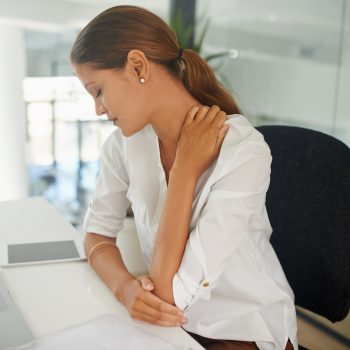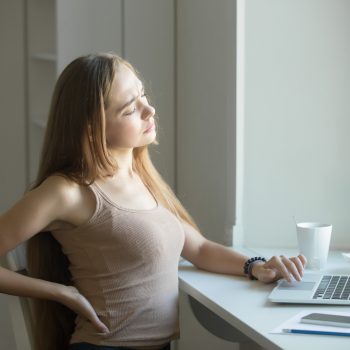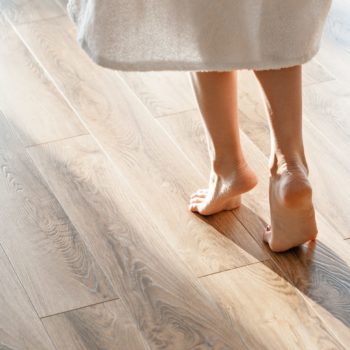Back pain affects 80% of people at least once in their lives. The triggers are also different between men and women, and in some cases back pain can lead to changes in the spine and induce postural changes. This is the case with ankylosing spondylitis, an inflammatory pathology of the spine that causes stiffening and reduces the flexibility of the spine until it merges, in the most serious cases, in a single structure “Spondylitis and mechanical low back pain – explains Dr. Lara Castagnetti, osteopath and specialist in Physical Medicine and Rehabilitation of Humanitas – are different diseases that have in common back pain, alteration and hypomobility of all the spine often including the cervical spine. However, depending on the cause, back pain can occur at different ages and with different symptoms.
For these reasons, a multidisciplinary approach for a correct diagnosis is preferred. “Today we know that early diagnosis and adequate treatment are essential to prevent the long-term consequences of spondylitis – continue Dr. Giacomo Guidelli, rheumatologist at Humanitas and Professor Carlo Selmi, Head of Clinical Rheumatology and Immunology at Humanitas and Professor at the University of Milan – For this reason, while in the common mechanical lower back pain it is a priority not to treat excessively, it is equally important to recognize cases of inflammatory pain very quickly. However, ankylosing spondylitis is part of a larger family of chronic inflammatory diseases called spondyloarthritis that also includes cases associated with psoriasis or chronic inflammatory bowel diseases.
Spondylitis, “inflammatory” and “mechanical” back pain: how to recognize them?
It’s early to say backache, but recognizing the type of pain helps not to underestimate it and prevent its disabling consequences even at a young age. “If spondylitis mostly affects young men aged between 20 and 40 years, in a ratio of 3 to 1 with respect to women – continues Dr. Lara Castagnetti – in the presence or family history with rheumatologic diseases such as psoriasis, or inflammatory diseases such as chronic intestinal ulcerative colitis and Crohn’s disease, mechanical back pain may arise in old age but with different characteristics of pain. “Mechanical” back pain strikes even in old age, with sudden pain that worsens with movement and effort, but improves with rest. As with spondylitis, in addition to pain, the posture of the spine gradually changes until it reduces its mobility and stiffens. Inflammatory back pain, on the other hand, is more frequent in young people, has an insidious, intermittent or slow onset and is long-lasting; the pain worsens at night and causes considerable stiffness in the morning, but it is rarely of a throbbing or acute type, while more often the patient complains of discomfort, weight, wrapping, a sense of constriction of variable and not well localized intensity that improves with movement”.
Ankylosing spondylitis, consequences and treatments
It is also defined as the disease of the “man who cannot look to the sky”, spondylitis not only causes changes in the spine but also decreases lung function, increases risk of cardiovascular disease and myocardial infarction, as well as osteoporosis, risk of vertebral fractures, changes in balance and defense mechanisms from falls or sudden events. All these consequences are effect of changes in the spine at the level of:
– Posture: forward bending of posture
– Pelvis: reversal and forward displacement of the center of gravity
– Cervical spine: hyperextension of the cervical and lumbar spine (straightening) with dorsal kyphosis (hump), poor capacity of extension and twisting of the neck, which causes the type of rigid movement when the patient looks back
– Hips and knees: marked flexion of the hips and knees during movement, poor mobility when the patient has to pick up an object from the ground (hip hyperflexion with motionless rachis)
– Muscles: shortening of hip flexors, ischiocrural muscles and abdominal muscles
– Vertebral and/or sternal cost structures: reduction of thoracic expansibility up to restrictive ventilatory insufficiency
“Despite there being a functional alteration associated with spondylitis, most of the evidence published focuses on mobility exercises – adds Dr. Lara Castagnetti – giving little attention to other aspects important for a balanced rehabilitation program such as stretching, muscle strengthening, adequate cardiorespiratory fitness. Although there is not enough scientific evidence to say which type of activity is most beneficial, regular, moderate physical activity should be encouraged, adapted to the degree of disease, initial or advanced, for about 2-4 hours per week. In fact, it has been shown that spine exercises performed for more than 5 days a week and with more than 200 minutes of physical activity are associated with decreased pain, improved spine function, and reduced rate of disability progression of up to 5 years. “Finally, – conclude Dr. Giacomo Guidelli and Professor Carlo Selmi – today we have medical treatments available, especially with biological drugs that act on the mediators of inflammation, which can significantly change the natural history of the disease.










